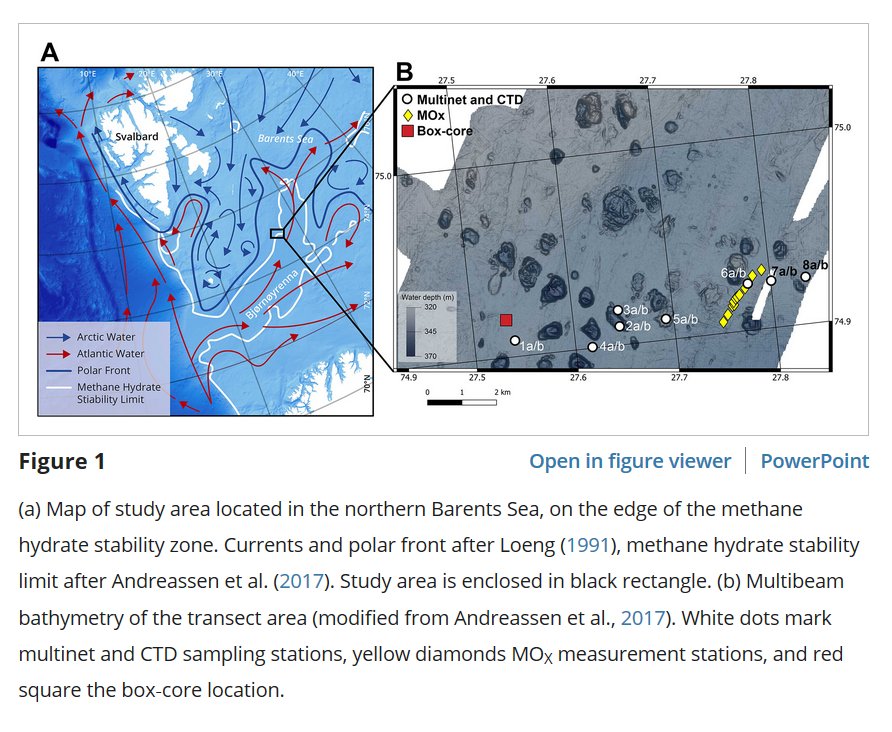Development, Productivity, and Seasonality of Living Planktonic Foraminiferal Faunas and Limacina helicina in an Area of Intense Methane Seepage in the Barents Sea
New publication by Siri Ofstad, Julie Meilland, Katarzyna Zamelczyk, Melissa Chierici, Agneta Fransson, Friederike Gründger, Tine L. Rasmussen

Abstract:
Although the plankton communities in the Barents Sea have been intensely studied for decades, little is known about the living planktonic foraminiferal (LPF) and pteropod faunas, especially those found at methane seep sites. Along a repeated transect in the “crater area” (northern Barents Sea, 74.9°N, 27.7°E) in spring and summer 2016 the flux of LPF and of the pteropod species Limacina helicina showed a high degree of variability. The LPF had low concentration (0–6 individuals m−3) and small tests (x̄ = 103.3 μm) in spring and a 53‐fold increase (43–436 individuals m−3) and larger tests (x̄ = 188.6 μm) in summer. Similarly, the concentration of L. helicina showed a tenfold increase between spring and summer. The LPF species composition remained stable with the exception of the appearance of subtropical species in summer. No relationship was observed between the spatial distribution of LPF, L. helicina, and methane concentrations in the area. The methane plumes in April coincided with elevated dissolved inorganic carbon, low pH, and calcium carbonate saturation states, and the methane concentration seemed to be controlled by lateral advection. The δ13C and δ18O of Neogloboquadrina pachyderma and Turborotalita quinqueloba are comparable to previous observations in the Arctic and do not show any influence of methane in the isotopic signals of the shells. Although no evidence of direct impact of high methane concentrations on the LPF (size and concentration) were found, we speculate that methane could indirectly enhance primary productivity, and thus biomass, through several potential pathways.
